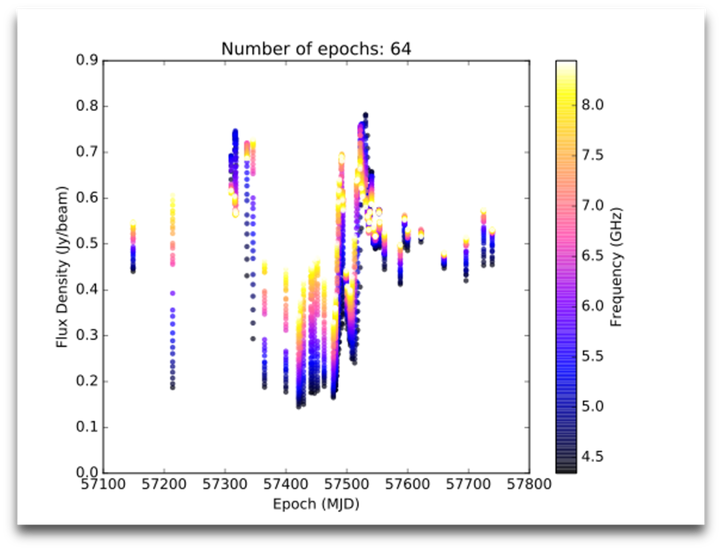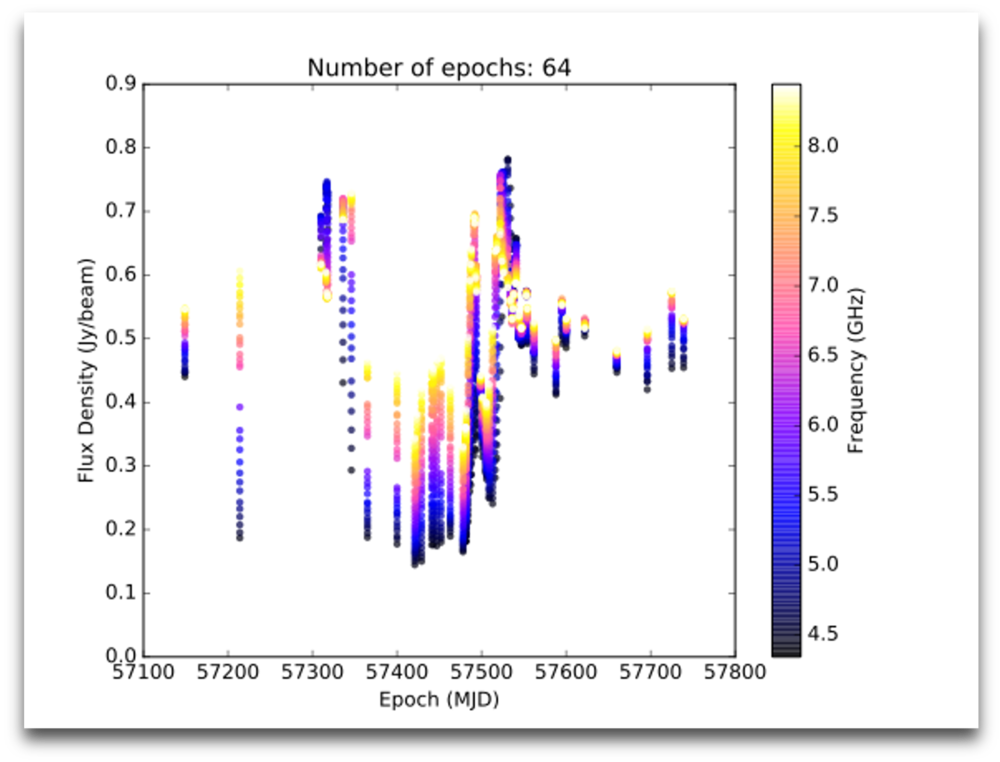Extreme scattering events
Holy ESE, Batman!
 An extreme scattering event caught in real time. Image Credit: Keith Bannister (CASS). From ATNF Daily Astronomy Picture
An extreme scattering event caught in real time. Image Credit: Keith Bannister (CASS). From ATNF Daily Astronomy PictureMost cases of interstellar scintillation are quite weak, however some events are much more extreme and involve strong lensing of the radio signal by a highly localised, highly dense cloud of ionised material. These are known as Extreme Scattering Events, or ESEs. They are historically discovered by post-production analysis of lightcurves, however, the ATESE group has now pioneered a new method of real-time spectral analysis.
ESEs are extreme but relatively brief compared to how often most radio sources are observed. As a result, by the time an ESE is identified in post-processing, the event may be over halfway done and there will be a dearth of information for the initial ESE phase. A real-time analysis method means ESEs can be identified as they begin and observations of the source can be undertaken more frequently.
In this brief sub-project, I tested the completeness of the new method by comparing its results to the old, tried-and-true method of post-production analysis. I confirmed that all previously-known ESEs were recovered by the ATESE method but also identified up to 3 new (possible) ESEs.
